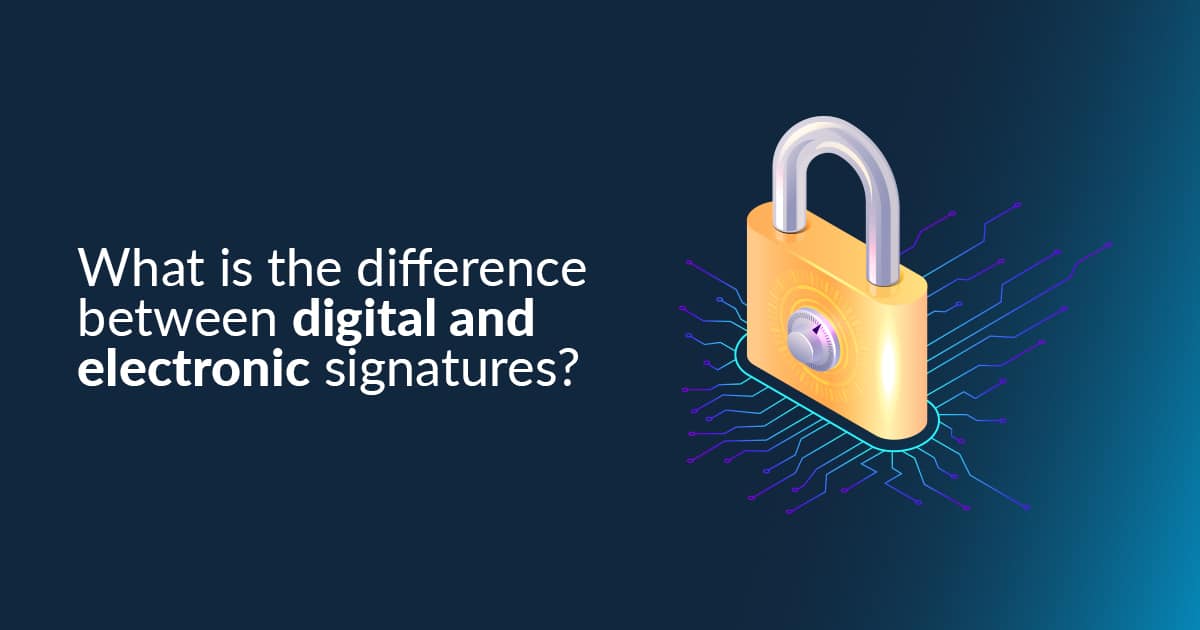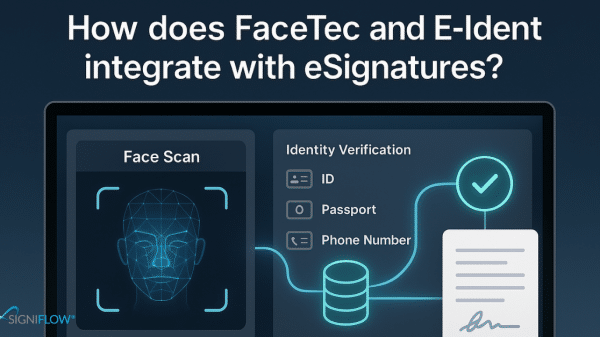Understanding the difference between digital and electronic signatures is crucial for businesses navigating today’s digital landscape. The difference between digital and electronic signatures lies in their technology, security, and use cases.
Digital signatures use cryptographic methods to verify the authenticity of a document, while electronic signatures are broader and include any form of consent captured electronically.
By recognising the difference between digital and electronic signatures, businesses can choose the best solution for their needs. The difference between digital and electronic signatures ensures that organisations can align their signing methods with their security and operational requirements.
Defining electronic signatures
An electronic signature, or e-signature, includes a variety of methods for signing documents electronically. This can range from typing a name to using a scanned signature image. While electronic signatures are legally binding in many countries, some situations call for the added security provided by digital signatures. Despite this, electronic signatures remain a popular choice for their simplicity and flexibility.
Our enhanced workflow engine allows you to seamlessly switch between electronic and digital signatures. Whether you prioritise the convenience of electronic signatures or the robust security of digital signatures, our platform adapts to meet your needs effortlessly.
Defining digital signatures
Digital signatures are a specialised type of electronic signature that use public key infrastructure (PKI) to ensure security and authenticity. By embedding a unique encrypted key into the signed document, digital signatures provide a higher level of assurance that the content has not been altered. This makes them ideal for high-stakes transactions, legal agreements, and compliance-focused industries.
The distinction between digital and electronic signatures lies in their security features. Digital signatures are often the choice for industries where data integrity and authentication are critical, while electronic signatures are more suited to general business applications.
Key differences between digital and electronic signatures
- Technology: Digital signatures rely on cryptographic encryption, whereas electronic signatures can include simpler methods, such as a typed name or scanned signature.
- Security: Digital signatures offer advanced security features like data integrity checks and authentication, ensuring the highest level of protection.
- Legality: Both types are legally recognised in many jurisdictions; however, digital signatures often meet stricter compliance and regulatory requirements.
- Use cases: Digital signatures are best suited for regulated industries and high-stakes transactions, while electronic signatures provide versatility for everyday business needs.
Why the difference matters
Choosing between digital and electronic signatures depends on your business needs. Understanding their differences helps you select a solution that aligns with your security, compliance, and convenience requirements. By using both types strategically, businesses can achieve the perfect balance between efficiency and security.
SigniFlow’s platform provides unmatched flexibility, enabling you to switch seamlessly between digital and electronic signatures to meet your workflow demands. Whether you prioritise simplicity or enhanced security, our solution ensures you’re equipped to handle any signing scenario with confidence.
Conclusion
The distinction between digital and electronic signatures underscores the importance of choosing the right solution for your needs. With our enhanced workflow engine, you can seamlessly combine the convenience of electronic signatures with the advanced security of digital signatures. Embrace a signing process tailored to your requirements, boosting efficiency and ensuring no compromise on reliability.
If you want more information on digital and electronic signatures and deciding which one is best for your business be sure to reach out to us here.































